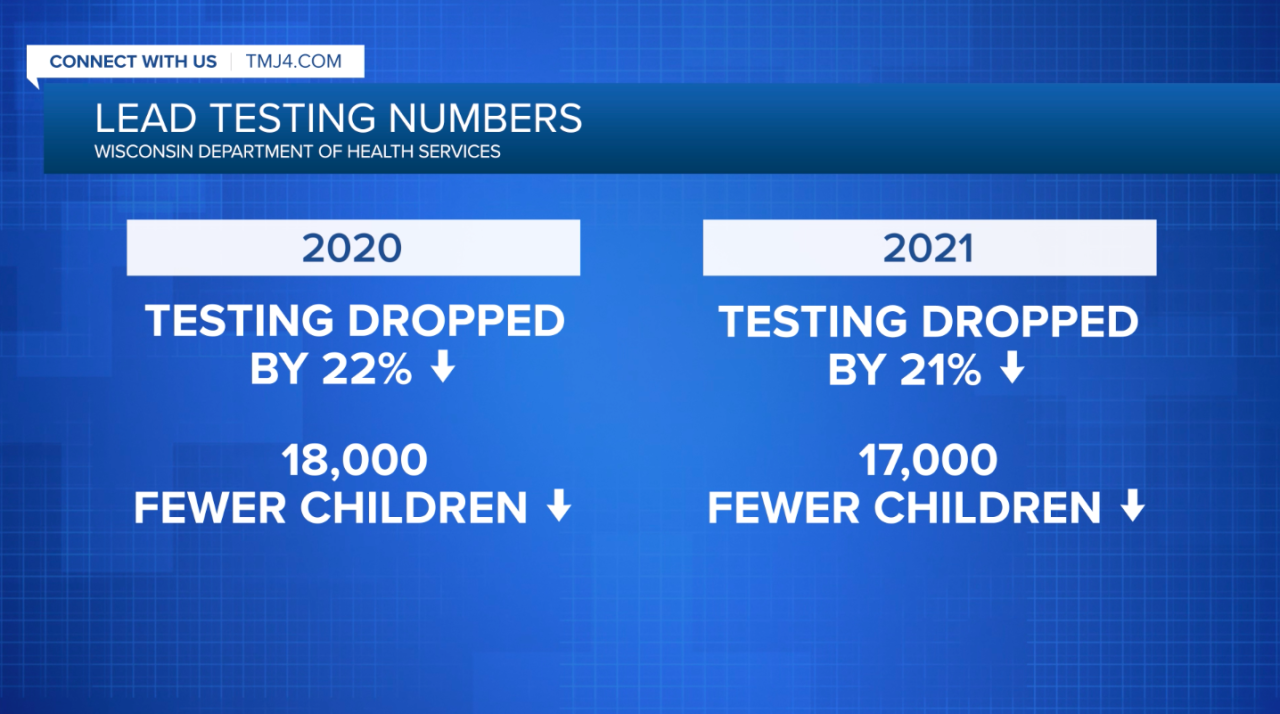MILWAUKEE — A test that detects lead poisoning in children has been under recall for seven months. It means more children, especially those at-risk of lead poisoning, have missed getting lead tested. It has also meant parents have to take an extra step if they want to find out it their child has been lead poisoned.
Deanna Branch says she thought her then 3-year-old son was going through a phase when his behavior started to get out of control.

“Every child is different, he just having a moment,” said Deanna.
But a routine test at the pediatrician’s office told her a much different story.
“The pediatrician called me and she just said, ‘Come in right away,' she said 'don't come into the office, come to Children's Hospital.’ She already got him a room and admitted him. They just said his lead level was high, I don’t even know what lead was,” said Deanna.

Deanna, like many families in Milwaukee, lived in a house built before 1978. That means the home likely had lead paint. An inspection later showed lead on the walls, the plaster, the doors and windows.
“Oftentimes, even though a child may be at risk for lead poisoning, it is something that is silent or not immediately recognized or noticeable,” said Dr. Heather Paradis of Children’s Wisconsin.
Children’s Wisconsin says a lead test is the best and often the only way for families to know if their child has been lead poisoned.

“Children are most susceptible or at risk for a lead poisoning to occur, when they are between the ages of one and two years old, and so it's recommended that all children begin lead testing by age one and have at least a second test again at age two. We actually see the highest number of newly diagnosed lead poisoned children at the age of two,” said Paradis.

The pandemic caused a lot of families to skip their children’s regular doctor’s appointment or do them virtually. In 2020, the Wisconsin Department of Health Services found lead testing levels dramatically dropped by 22%. That means 18,482 fewer kids got a lead test than normally would.
Just as people started to return to in-person doctor’s visits, DHS’s program manager for the Wisconsin Childhood Lead Poisoning Prevention Program, Margie Coons, said lead testing kits used in most doctor’s offices and hospitals were recalled. It is the same type of kit that told Deanna her son was in danger. DHS said the recall caused lead testing levels to drop by another 21% in the state and 17,437 fewer children were tested.
There is still an option for parents and caregivers to get a lead test, but it means another step and another appointment to visit a lab or a hospital to get a child lead tested. Deanna said before her son got the lead poisoning diagnoses, she would have likely skipped that extra appointment.
“I didn’t even know what it was, or what the ramifications of being exposed to lead even meant,” said Deanna.
The state says the population of children most at-risk are not being tested.
“The largest decreases in testing we're seeing in low income children and children of color who are the populations who are most at risk for lead poisoning,” said Coons.
On top of that, children who were lead tested with kits that were distributed between October 2020 and August 2021 likely have to be retested because those test falsely reported low lead level.

“It means that there have been fewer children tested and more children who are due for a test. Also, what we might see when we resume testing is that we'll have more children identified with lead poisoning,” said Coons.
Deanna says her son has been permanently effected by lead poisoning and is now living with some mental health issues. But she is working on a book with him to show what he went through.
“He tend to not know what to do with his hands, so him working on that book with me - and he's the illustrator of the book, that's really his outlet. He’s quite an artist,” said Deanna.
The state says it was recently notified the recall on lead testing kits is over. However, it will take some time for the company to start manufacturing the tests and get them back into doctor’s offices. No word on when they will be readily available again.




